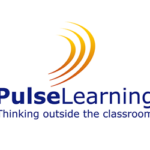In the realm of rapid eLearning, slow and steady doesn’t win the race. Rapid eLearning describes courses that can be designed and implemented quickly using a much faster, condensed development cycle than traditional design processes. Although rapid eLearning boasts benefits that can make it appear initially attractive, there is still speculation about the real value of rapid eLearning.
Rapid eLearning Advantages
1. Faster development time.
Most traditional eLearning design processes go something like this. A Subject Matter Expert (SME) and Instructional Designer (ID) discuss content, the Instructional Designer writes the storyboard, which then goes through quality checks before heading back to the Subject Matter Expert for changes and sign-off before build begins. The built course then goes through a similar loop. In rapid eLearning, usually the Subject Matter Expert writes the content directly into an authoring tool under the guidance of an Instructional Designer, cutting out quite a few process steps and significantly reducing development time.
2. Cost-effective.
Because the Subject Matter Expert or Instructional Designer will write content directly into a rapid authoring tool, there isn’t a need to spend money on sophisticated development to build the product. There are several effective, user-friendly authoring tools available that don’t require development experience, such as Captivate, Lectora, and Storyline. Rapid eLearning can also be cheaper to produce due to the reduced development time.
3. Direct Subject Matter Expert input.
With rapid eLearning there is less chance of content being misinterpreted by the Instructional Designer, because the Subject Matter Expert is the primary content author. It also means the Subject Matter Expert has stronger ownership of the content, which is likely to increase their engagement in the project.
Rapid eLearning Disadvantages
1. Lack of sound Instructional Design methodology.
Most rapid eLearning projects will require the involvement of an Instructional Designer to guide the Subject Matter Expert in authoring content, because Instructional Design methodology is key to how content is understood and retained. Removing the Instructional Designer from the process entirely can result in poor organization of information and reduced pedagogical integrity in the final product.
2. Quality issues.
Rapid eLearning can potentially produce dull eLearning. There are some important technical aspects that are easily forgotten in rapid eLearning, including user experience (UX). A sound user experience plays a critical role in a positive, engaging learning experience and it’s unlikely that Subject Matter Experts will have sound knowledge of user experience principles.
3. Compromised engagement and motivation.
Audience engagement is closely linked to the quality of the product so if this slips, learners can lose motivation toward the training. Maintaining a positive attitude toward corporate training is important for building a learning culture within your organization so employees see that their skill development is valued, resulting in increased productivity and a positive work attitude.
In the realm of rapid eLearning, slow and steady doesn’t win the race. Rapid eLearning describes courses that can be designed and implemented quickly using a much faster, condensed development cycle than traditional design processes. Although rapid eLearning boasts benefits that can make it appear initially attractive, there is still speculation about the real value of rapid eLearning.
Rapid eLearning Advantages
1. Faster development time.
Most traditional eLearning design processes go something like this. A Subject Matter Expert (SME) and Instructional Designer (ID) discuss content, the Instructional Designer writes the storyboard, which then goes through quality checks before heading back to the Subject Matter Expert for changes and sign-off before build begins. The built course then goes through a similar loop. In rapid eLearning, usually the Subject Matter Expert writes the content directly into an authoring tool under the guidance of an Instructional Designer, cutting out quite a few process steps and significantly reducing development time.
2. Cost-effective.
Because the Subject Matter Expert or Instructional Designer will write content directly into a rapid authoring tool, there isn’t a need to spend money on sophisticated development to build the product. There are several effective, user-friendly authoring tools available that don’t require development experience, such as Captivate, Lectora, and Storyline. Rapid eLearning can also be cheaper to produce due to the reduced development time.
3. Direct Subject Matter Expert input.
With rapid eLearning there is less chance of content being misinterpreted by the Instructional Designer, because the Subject Matter Expert is the primary content author. It also means the Subject Matter Expert has stronger ownership of the content, which is likely to increase their engagement in the project.
Rapid eLearning Disadvantages
1. Lack of sound Instructional Design methodology.
Most rapid eLearning projects will require the involvement of an Instructional Designer to guide the Subject Matter Expert in authoring content, because Instructional Design methodology is key to how content is understood and retained. Removing the Instructional Designer from the process entirely can result in poor organization of information and reduced pedagogical integrity in the final product.
2. Quality issues.
Rapid eLearning can potentially produce dull eLearning. There are some important technical aspects that are easily forgotten in rapid eLearning, including user experience (UX). A sound user experience plays a critical role in a positive, engaging learning experience and it’s unlikely that Subject Matter Experts will have sound knowledge of user experience principles.
3. Compromised engagement and motivation.
Audience engagement is closely linked to the quality of the product so if this slips, learners can lose motivation toward the training. Maintaining a positive attitude toward corporate training is important for building a learning culture within your organization so employees see that their skill development is valued, resulting in increased productivity and a positive work attitude.









